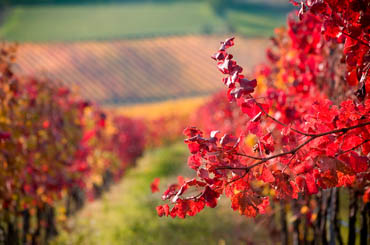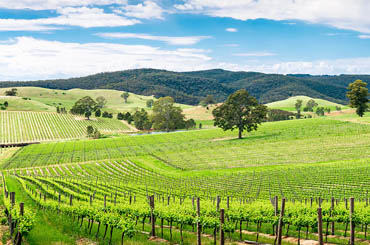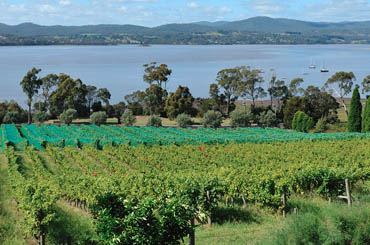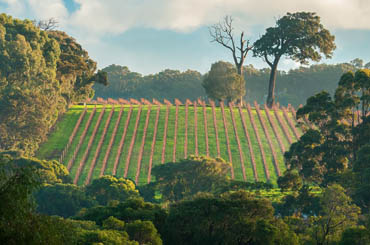The 2020 Victorian vintage
Yarra Valley
The Yarra Valley rejoiced with good August/September rainfall before wild variations in maximum temperatures – a very mild season following a very hot November – meaning slow ripening after a late bud burst. That said, nails were chewed to the quick by weeks of smoke from the Hunter Valley, replaced by smoke from Gippsland. Incredibly, smoke taint tests came back zero, leading to retest after retest: zero. Old smoke, you see.Yields were pathetically low, with tiny bunches, fruit quality high to very high.Mornington Peninsula
The Mornington Peninsula had above-average rainfall, and an exceptionally windy spring decimated flowering and led to tiny bunch weights and yields. Pinot noir will be the standout.Geelong
Geelong experienced one problem after another. Good winter rain resulted in even bud burst that was smashed by a frost in late September, effectively starting the growing season again, only to be followed by cold, windy conditions that reduced the potential crop by 50% (chardonnay most affected). Hot weather either side of Christmas came next, then bursts of unwelcome rain and smoke that seemed to be the last straw, until the old smoke/new smoke conundrum was understood.Gippsland
Gippsland was happier than many, yields down but not dramatically, courtesy of cool wet weather during flowering, the cool summer/autumn spreading harvest dates and reducing intake pressure.Grampians
The Grampians enjoyed dam-filling winter/spring rainfall, then moderate swings between very cool and warm from February through March. Yields were low except for chardonnay and pinot noir. Overall quality was high with good natural acidity and vibrant fruit intensity.Alpine Valleys
Smoke taint destroyed the Alpine Valleys vintageKing Valley
King Valley experienced early smoke (pre-veraison) that had no impact. The season had ups and downs, resulting in smaller and lighter bunches decreasing yield, but ultimately gave rise to very good fruit quality, prosecco the star.Beechworth
No wine was made in many Beechworth wineries due to fire damage and smoke taint, the cruelest cut being the ideal weather that might have produced a great vintage. br />Upper Goulburn
Upper Goulburn followed the pattern of very low yields for all varieties due to poor weather during flowering and summer heat spikes, thereafter with perfect weather through February and March, the quality described as extraordinarily good.Henty
Henty suffered three separate episodes of black frost, then windy conditions through flowering and on through the growing season.Yields were low except for semillon, an absolute star (in a region where riesling is normally the winner). Smoke was never an issue.Ballarat
Ballarat was smashed by frost in late September, by cold and windy conditions during flowering, by hot weather either side of December, and by rain during the tiny harvest.Macedon Ranges
Macedon Ranges avoided smoke but not adverse cold weather during flowering.Yields were very low across all varieties, but the cooler growing season has resulted in very good chardonnay and pinot noir.Nagambie Lakes
Nagambie Lakes had the alternating hot and cool days that affected many parts of Central Victoria. No bushfires or smoke to contend with, but the windy November/ December badly affected flowering and fruit-set. Much reduced intake will be offset by the quality of crisp riesling and marsanne and deeply coloured and flavoured shiraz and cabernet sauvignon.Strathbogie Ranges
Strathbogie Ranges had one of the driest years on record, yet apart from a few days of heat, it was a very mild growing season, the most notable feature the extremely low yields – and a few days of rain in mid-harvest.Bendigo
Bendigo was a tale of two halves. Dry, windy and cold conditions before Christmas led to poor fruit-set and ultimately reduced yield to 50% of normal. The second half was mild, and rain fell when needed. Both red and white varieties fared well, the quality good.Heathcote
In Heathcote the continuing drought allied with a number of days over 35°C. The result was exceptionally low yields, culminating in dark, concentrated shiraz needing attention to detail.Pyrenees
The Pyrenees had a similar story – good winter rain, then not a drop more. The heat of early summer was followed by very cool, dry conditions, the ensuing yields very low, the quality of cabernet sauvignon excellentGlenrowan and Rutherglen
Glenrowan and Rutherglen both reported yields down 30% on normal due to drought and heat impact, smoke still a question mark, and durif the best performer.Murray Darling
Murray Darling had almost no rain up to vintage, but hot and dusty conditions in November and December impacted on flowering, leading to low yields of very good quality thanks to ideal conditions from January to March.To discover more regional insights from the 2020 Australian vintage chart – click here.








